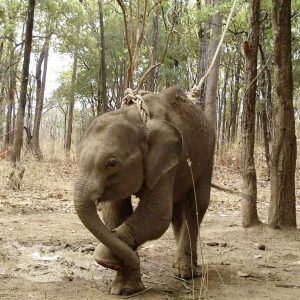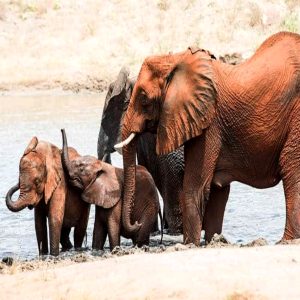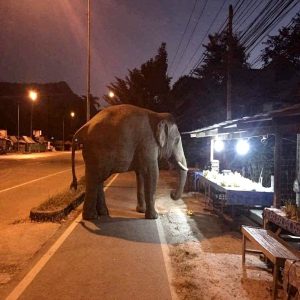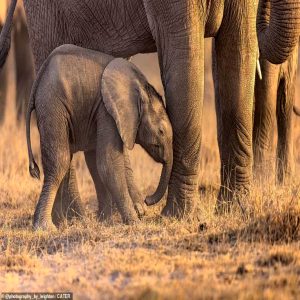For the first time ever, the conservation status of Africa’s two species of elephant have been assessed separately, and the results have shown that both are endangered.
The International Union for Conservation of Nature (IUCN) – the organisation responsible for assessing the conservation status of wild animals and plants – has recently looked at both species individually and found that they are more endangered than previously thought.
Once classified as a single group as Vulnerable, the African savanna elephant is now listed as Endangered while the African forest elephant is Critically Endangered.
Dr Bruno Oberle, the Director General of the IUCN, explains, ‘Africa’s elephants play key roles in ecosystems, economies and in our collective imagination all over the world.
‘Today’s new IUCN Red List assessments of both African elephant species underline the persistent pressures faced by these iconic animals. We must urgently put an end to poaching and ensure that sufficient suitable habitat for both forest and savanna elephants is conserved.
‘Several African countries have led the way in recent years, proving that we can reverse elephant declines, and we must work together to ensure their example can be followed.’
The assessment has found that savanna elephants have declined by at least 60% over the last 50 years, while the forest elephants’ numbers have fallen by over 86% in 31 years.

The smaller forest elephants have experienced a shocking 86% decline over just 31 years © Thomas Breuer/Wikimedia Commons
Two species of African elephant
The African elephant is split into two separate species.
The African savanna (or bush) elephant is the bigger species and is seen most often, as it moves through open grasslands across the plains and deserts of much of eastern and southern Africa. Reaching up to four metres tall and weighing over 10 tonnes, the savanna elephant is the largest living land animal.
The forest elephant is slightly smaller than its cousin, reaching around 2.5 metres tall and tipping the scales at up to four tonnes. Its diminutive size is thought to be an adaptation to living in the tropical rainforests that blanket much of the African continent’s interior, where this species is predominantly found.
Historically these two species have generally been treated as one, and it has only been in the last few decades that they were recognised as separate species, after genetic analysis showed they were sufficiently different.

The poaching of elephants for their ivory is one of the main causes of their decline © Jane Wynyard/Save the Elephants
But this lumping of the two African elephants had continued when it came to assessing their conservation status, despite the separate species facing differing fates. This has traditionally made it look as though some populations were doing better in terms of conservation than they actually are.
Rapid declines
Now that the two species have been separated, it is clear that both are doing much worse than was thought.
While the assessment has found that there are around 415,000 African elephants in total, the speed at which they have declined over the last few decades means that the savanna and forest elephants are now both classed as Endangered, and the forest elephants critically so.
This is due to a combination of reasons. In 2008 both species suffered a sharp decline due to increases in poaching. While poaching has reduced slightly since peaking in 2011, it continues to threaten many populations, particularly the forest elephants.

The ivory of forest elephants is seen as more desirable and may be contributing to their steeper decline © Frank af Petersens/Save the Elepahants
The ivory of the forest elephant is typically smaller than that of the savanna elephant, but it is often more desirable on the black market and so commands higher prices. The material is seen as more attractive due to its slight pink hue, while it is also harder and therefore easier to carve.
In addition to the ongoing threat of poaching, many populations of elephants are also under threat from hunting and the degradation of their habitat, as grasslands and forests are turned over crops and grazing.
Andrew Terry, the Director of Conservation at the Zoological Society of London, says, ‘Conservation efforts to protect savanna elephants have seen many populations begin to recover, but sadly the same is not true for forest elephants, which remain under intense pressure from habitat loss and poaching.
‘Recovering these populations is vital for the forests but needs commitment across communities, companies and government working together to achieve success.’





